You may be interested in finding out if there are water pipes in your home's wall, especially if you plan on renovating the place. You want to avoid damaging the plumbing by accidentally drilling through the lines in the wall. We researched this topic thoroughly and compiled ways you can explore to find the pipes.
To determine if there are water pipes behind your wall, take these steps:
- Inspect for wall damage.
- Check for a wall-mounted faucet.
- Use a long screwdriver to listen for vibrations.
- Inspect with an electronic wall stethoscope.
- Investigate with a borescope camera.
- Test with an electronic stud finder.
- Use a wall scanner.
We understand that it is needful to know the locations of the water pipes behind your walls. Keep reading as we detail how you can use these ways to determine if there is a water pipe in the wall, alongside other helpful information. Without further ado, let us start on this topic!
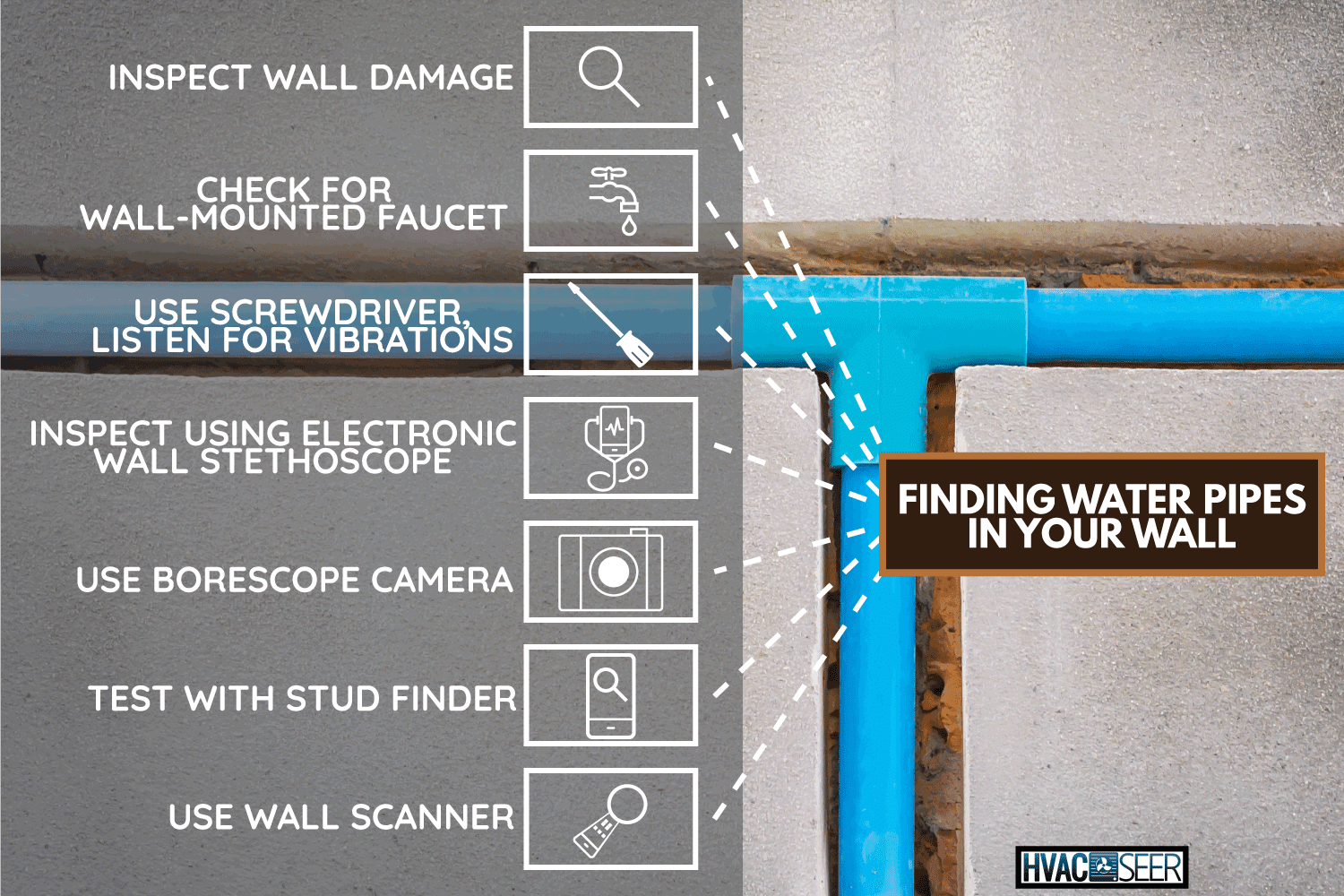
Determining The Presence Of A Water Pipe In Your Wall
Water pipelines, alongside electrical wiring systems, serve as the backbone of your house. A fully-functional piping system allows water distribution throughout your home for various needs.
Any damage to these water pipes can cause problems for you and your house, along with the cost needed to repair them.
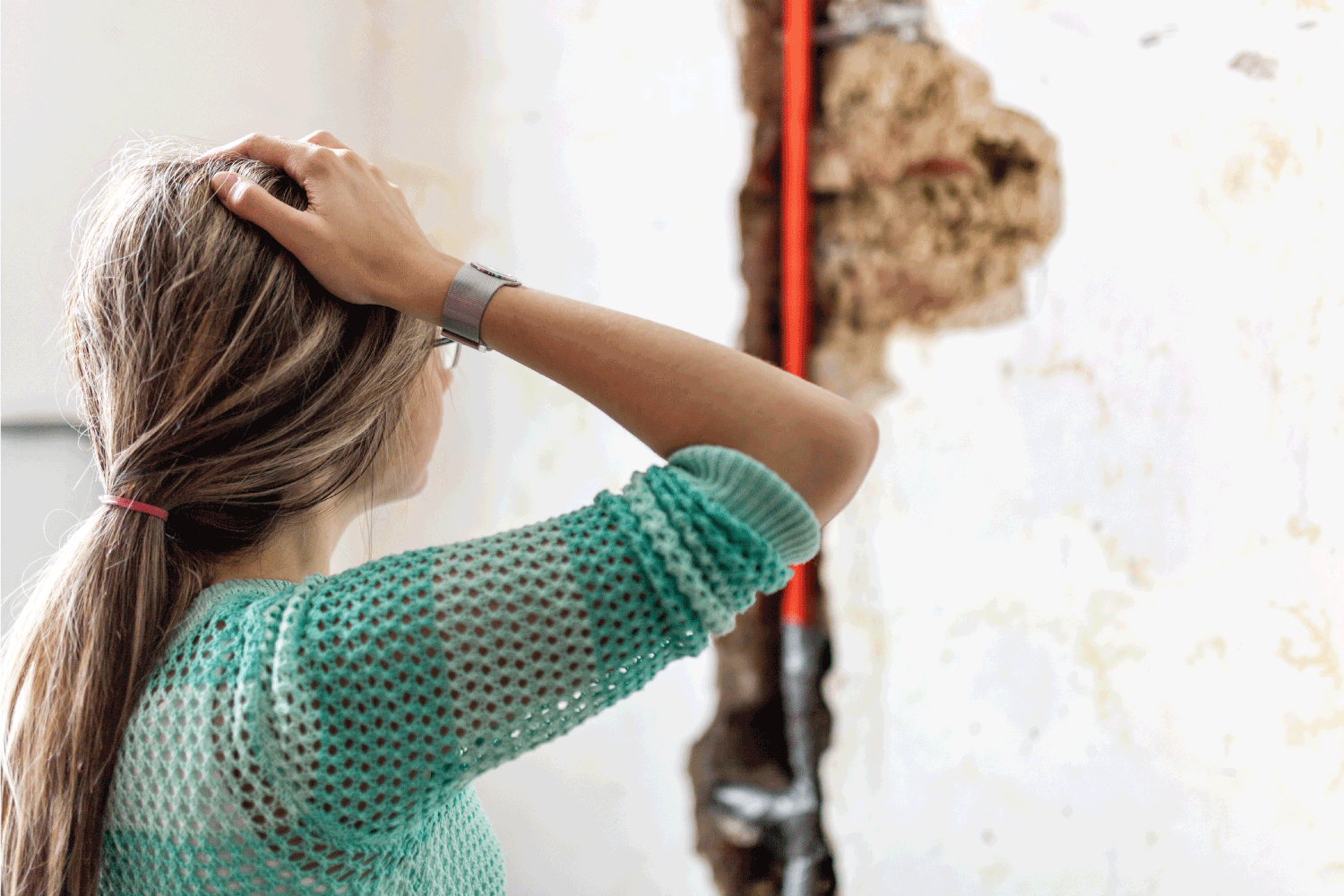
With this in mind, knowing the location of the water pipes behind your walls is very important. Keep reading for the things to look out for and tools you can use to detect these hidden water pipes.
Inspect For Wall Damage
Begin by checking for wall damage such as discoloration, change in texture, molds, and moist walls. There is probably a leaking pipe if you find any of these signs. So, you can start investigating for a probable source.
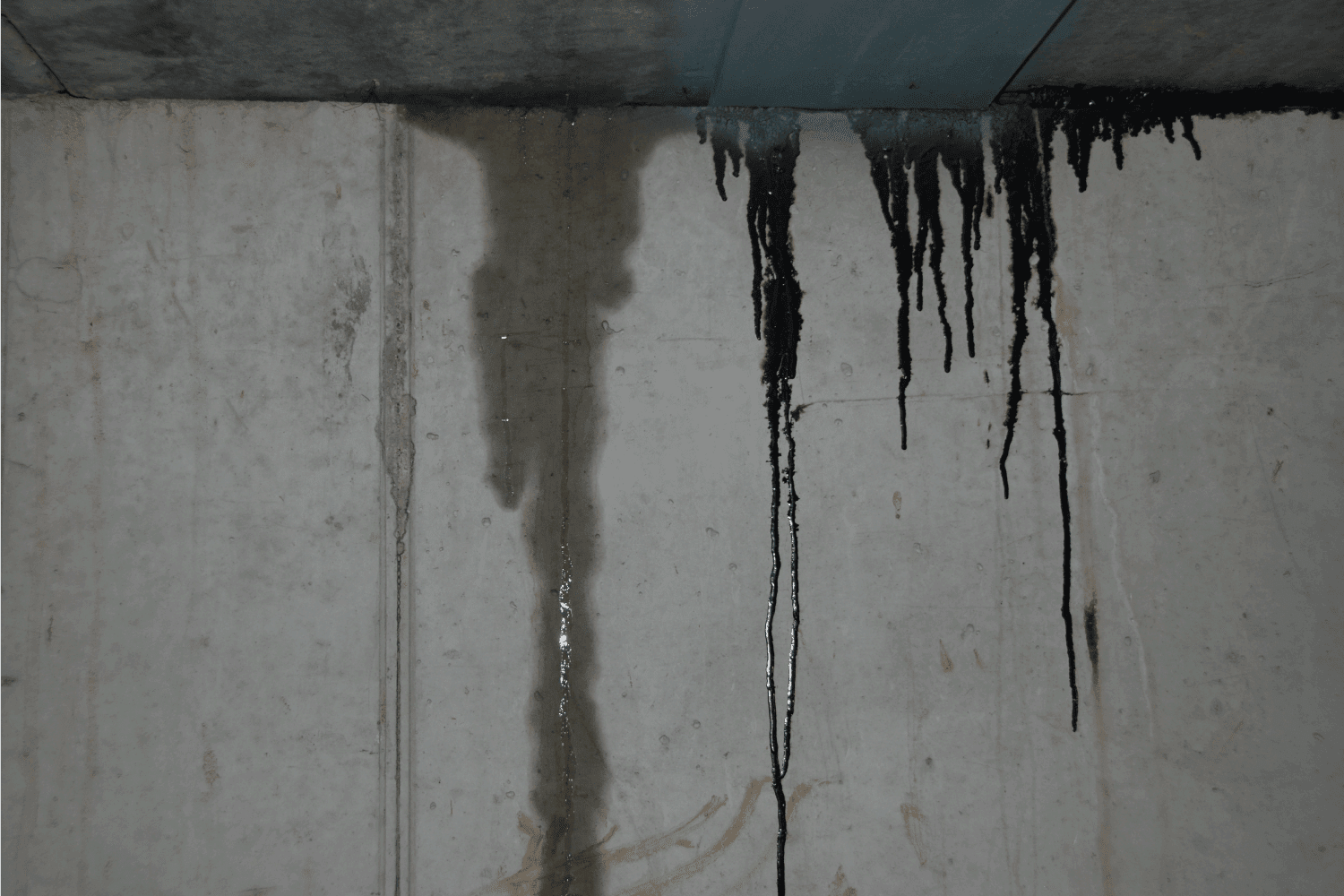
You can use a simple home water leak detector or a more costly professional device to inspect the presence of water. Home leak detectors are generally pretty affordable, so it's worth checking to see if one of these will work for you.
Consider hiring a professional to fix the leak as soon as possible to avoid further damage to the wall. The longer you wait, the costlier the repair charges become.
Check For Wall-mounted Faucet
If you have a wall-mounted faucet, there's a good chance that a water pipe is in the wall. Sometimes, the taps are mounted with brackets built into the wall, and at other times, they are mounted on the wall with just a few screws.
Either way, there is a good chance of a water pipe behind the wall-mounted faucet.
Use A Long Screwdriver To Listen For Vibrations
One traditional way to know if there is a water pipe in the wall is by using a screwdriver to listen for vibrations.
This test requires that you open the tap and let the water run, then put the screwdriver's tip into the wall, press firmly, and keep your ears open for vibrations or the sound of water. You can put a mark where you detect water flowing so you and others will be aware.
Using a long screwdriver to check for water pipes is the most convenient method since you can readily perform it without any complex tools. However, it is less accurate than the other methods.
Inspect With An Electronic Wall Stethoscope
Another method to know if there is a water pipe in the wall is by testing with an electronic wall stethoscope. This high-sensitivity sound detection instrument specializes in finding leaks for metal and PVC pipes through concrete walls and other solid surfaces.
If you happen to have one at home, then great! But if you don't, you can consider buying an affordable one.
First, open your faucet and wait a few seconds to allow water to flow through the pipe. Then, gently press the electronic wall stethoscope's head on the wall surface.
Listen closely for the sound of gushing or flowing water coming from the wall and slowly move toward the source of the sound to pinpoint its exact location.
You can put a marking on that particular spot or the entire path to be aware that there is a water pipe.
Investigate With A Borescope Camera
You can also use a borescope camera to tell if a water pipe is in the wall. A borescope is a remote inspection device that lights up and magnifies objects that are difficult to reach or impossible to see directly.
The borescope camera can provide a great wall view, allowing you to quickly and easily find water pipes. You can use a borescope camera from a mobile app or remote control. The remote control is a little better, but both work great.
Most borescope camera apps let you scan the inside of your home and let you know precisely where obstacles, such as water pipes, are located. They can even let you know when a small gap between two objects may indicate a hidden water pipe.
Test With An Electronic Stud Finder
An electronic stud finder is designed to locate studs and other obstructions inside your walls. Therefore, you can use it to find water pipes by monitoring density changes in the wall.
Most stud finders cannot detect PVC pipe because of its lightweight. For this reason, you have to open your faucet and let the water run through the pipe first. Furthermore, you must first calibrate the stud finder by pressing it on the wall surface and hitting the activating button of the device.
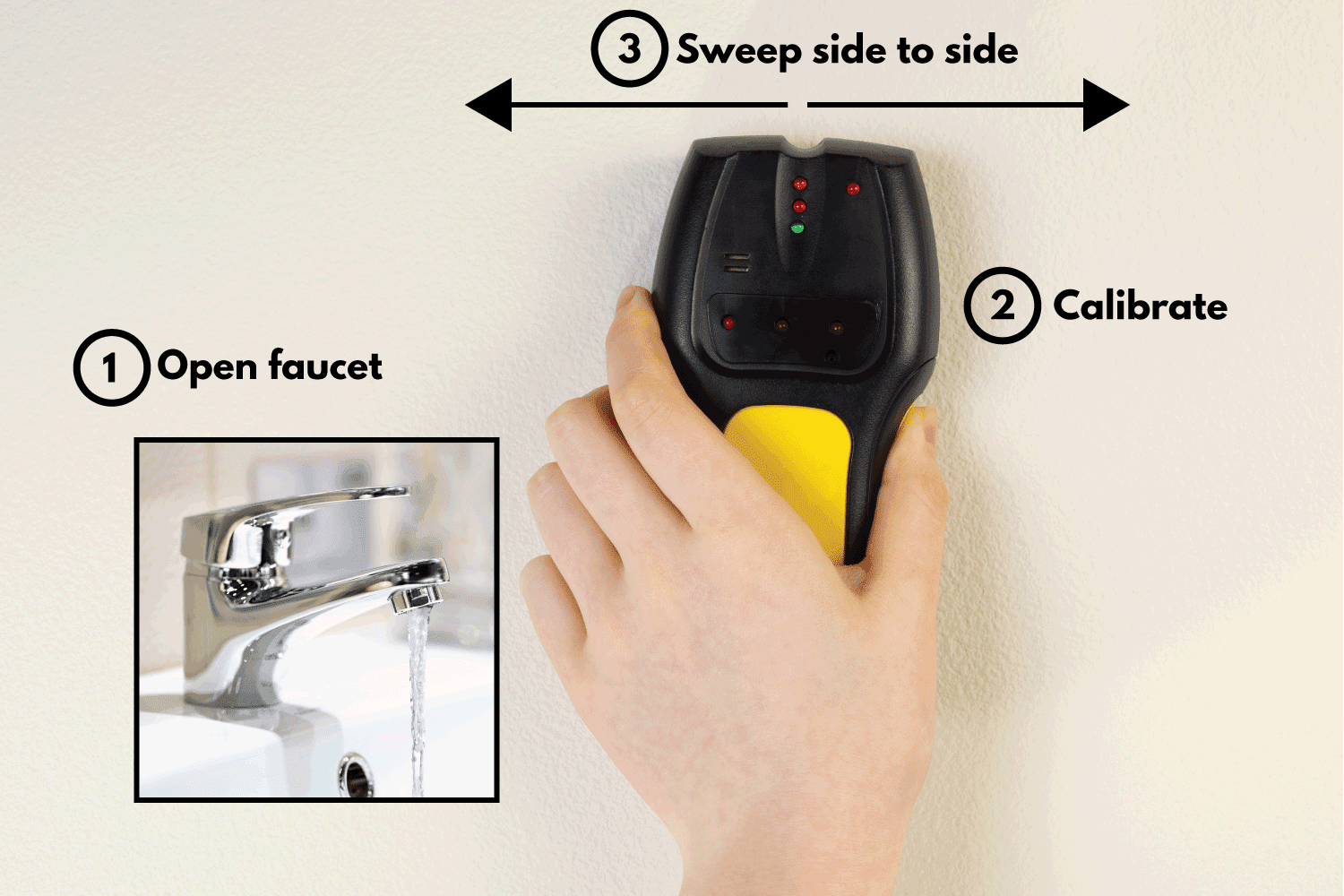
Slowly sweep the stud finder in a horizontal direction and wait until the indicator light illuminates and you hear a beeping sound. These signs imply that the instrument has detected the edge of an object which can be a water pipe.
Mark the spot and start sweeping again in a horizontal direction, this time from the other side, to detect the other edge. Mark it up to identify the exact location of the object as well as its estimated width.
Check out this electronic stud finder on Amazon.
Use A Wall Scanner
A wall scanner is an effective way to know if there is a water pipe in the wall. This handheld instrument is frequently used to find water pipes within a wall. Wall scanners are becoming increasingly popular, and there are a lot of models to choose from.
To use a wall scanner, first, open your faucet and let the water run through the pipe. Then, put the wall scanner against the wall surface and examine your walls for water pipes.
The scanner should be able to detect if there is a water pipe present in the wall and track down its exact location.
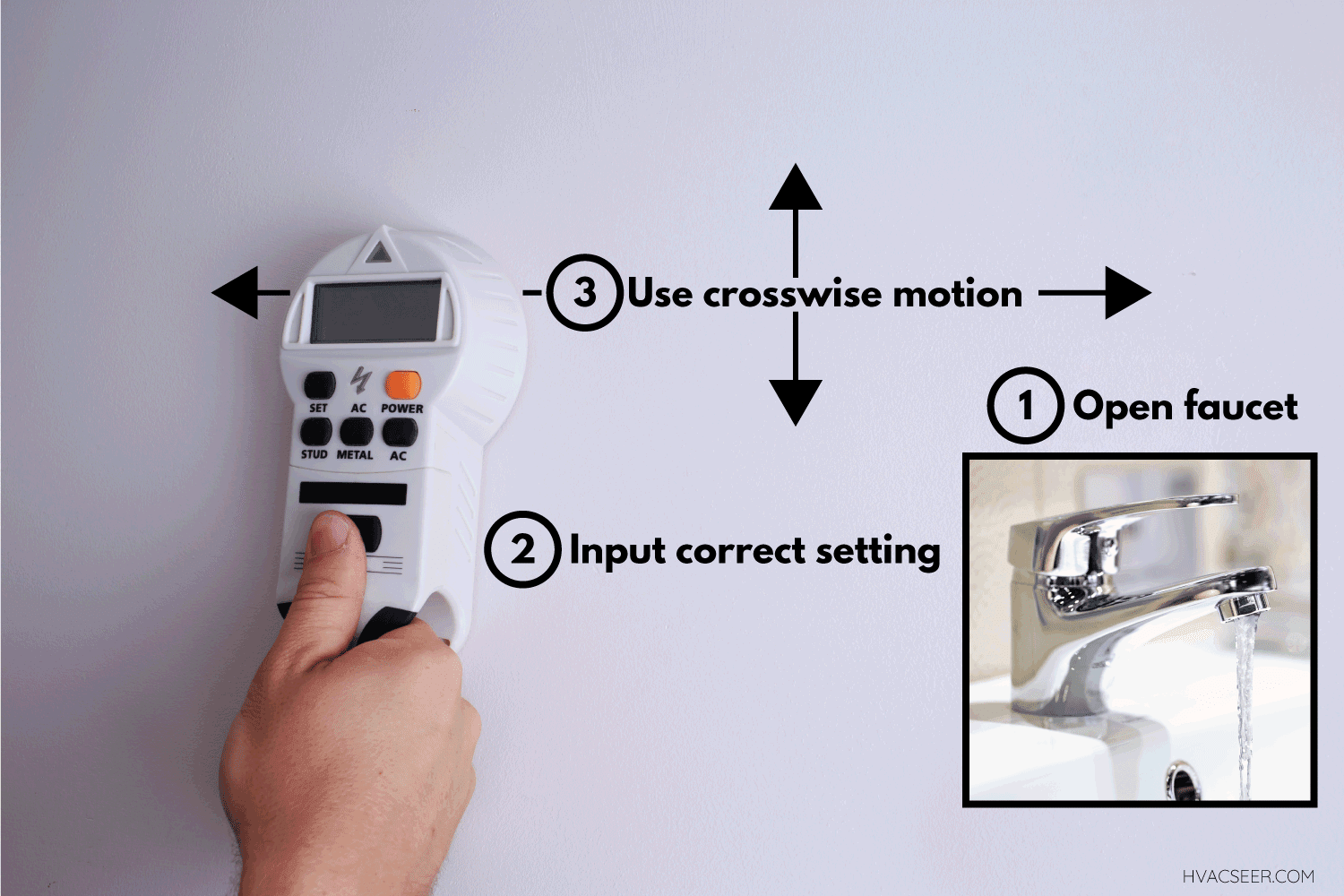
Ensure that you input the correct setting for a specific wall type. The tool must know what it is dealing with for efficiency in your readings.
Also, make crosswise measurements (cross the object while scanning) to detect the pipes properly. If you Measure alongside the object, you may fail to spot a variation since the scanner behaves as though it is not detecting water pipes.
Can A Metal Detector Detect Water Pipes?
A metal detector can only detect water pipes made from metal. Due to its inherent limitations, the device cannot detect PVC and other plastic pipes.
In Conclusion
Knowing the exact location of the water pipes in your home is necessary to avoid hitting them by mistake and causing damage when renovating your home. We hope the tips given above in this post will help you find the location of these pipes behind your walls.
Before leaving, do check out these other related articles:

